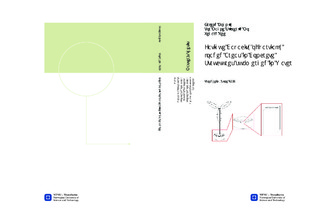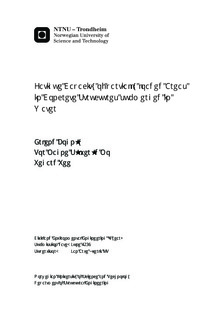| dc.description.abstract | As the world develops, the energy demand grows from day to day. With the climate changes as a concern, production of renewable energy is the future. The suppliers of wind turbines need to create larger turbines which requires higher towers. Hence higher stresses act under the tower shaft on the foundation. This is the starting point for this thesis. The thesis is an extension of the work started by Alexander Furnes and Ole Martin Hauge in their master thesis in 2011. As a part of this further work a higher amount of specimens were tested submerged in water. Reinforced and unreinforced specimens were subjected to partial static and dynamic compressive loads. This should document the contribution from the confinement effect by the splitting reinforcement. A part of the thesis is to validate the design code factors for increased compression strength for partially loaded concrete exposed to dynamic loading (fatigue). Static tests of the specimens were performed to determine an average static strength and the effect of reinforcement on the static strength. The main focus of the thesis is the specimens performance in fatigue while exposed to water. A total of 6 specimens were tested statically (3 reinforced, 3 unreinforced), while 12 were tested dynamically (6 reinforced, 6 unreinforced). All the specimens had the measurements 210(length) x210(width) x525(height) mm. In addition reference cubes (100x100x100) were tested throughout the testing period to track the concrete strength development.To be able to plot the result in a Wöhler-curve the specimens had to be tested with a minimum of two different load levels. In this thesis these two load levels were divided in short term and long term. The short term tests had a higher load level and therefore a shorter fatigue life. The long term tests had a lower load level and therefore a longer fatigue life. Three reinforced and three unreinforced where tested in both short term and long term.As the concrete strength became greater than planned, the calculated need for splitting reinforcement turned out to be lower than required. This affected the confinement of the partially loaded area. Although too little splitting reinforcement was mounted in the reinforced specimens, the trend is that the partially loaded area have an increase in strength if properly confined/reinforced. In the unreinforced specimens the factor for increase in capacity due to partially loading were ≈1, while in the reinforced specimens this factor was 1,48. The factor achieved was higher than the factor allowed in DNV-OS-C502, but lower than the factor allowed in NS-EN-1992-1-1. This factor would probably have been higher if the specimens were reinforced according to the actual concrete strength. The results from the dynamic testing were plotted in a Wöhler-curve and compared to the expected results according to the DNV design code. The C1-factor used in the DNV design code takes environmental effects on the fatigue life into account. The C1-factor is different for air (C1=12) and water (C1=10). The results from the dynamic tests showed that the design code is just conservative enough, with an indication of C1≈10 which is the same as in the design code. This applied for both reinforced and unreinforced specimens. However, when accounting for concrete strength development, some results indicate that the DNV design code might be inadequate. Thus, the C1-factor in the DNV design code is much more conservative with regard to air than to water (Furnes and Hauges testing estimated a C1-factor much higher than C1=12, for air). This indicates that the water effect is absolutely present, and might be of greater importance than commonly thought. Other codes and formulas do not even consider the environmental effect of water. As of now, the DNV design code does not cover the topic of partially loaded areas in dynamic loading. Paola Mayorca and DNV-GL is currently conducting a study to find appropriate rules on this topic. At the moment a partial amplification factor of 1,3 is suggested. By including both this new amplification factor and the concrete strength development, one unreinforced specimen is inadequate according to DNV design code. The partial effect is not present in unreinforced specimens. Therefore the partial factor will not affect their endurance. Hence, reinforcement in top layers is crucial.The reinforcement bars never reached yielding during the dynamic tests. This is mainly because the applied load in the dynamic tests were lower than the load which led to yielding in the static tests. Another reason is that the critical cracks is prevented from occuring within the reinforcement by the reinforcement, and occurs outside of the reinforcement bars. In comparison the critical cracks on the unreinforced specimens occurred in the middle of the specimens and develop towards the sides. The investigation have some limitations. The specimens are only an approach to a real wind turbine foundation. The threaded bars will affect the crack development. In addition, a higher number of specimens would have been beneficial to achieve results with a better statistical certainty. Though the limitations are present, the results give good indications of fatigue behaviour. | nb_NO |

